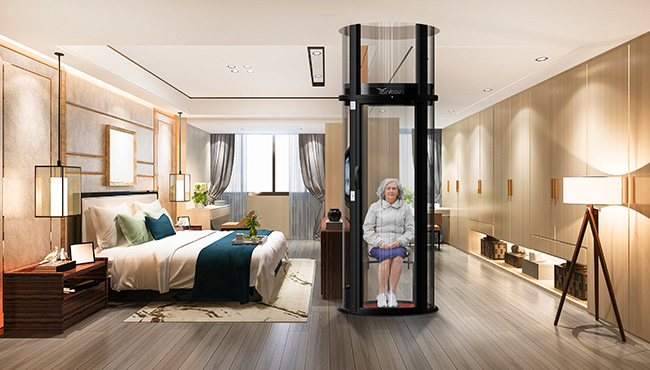Beyond the practical considerations of installing a Home Elevator, there are several other factors that homeowners should consider to maximize the benefits of their investment. These include
Enhancing Property Value
A home elevator is a significant upgrade that can increase the overall value of a property. By choosing a strategic location for the elevator, homeowners can enhance the appeal of their home to future buyers, particularly those who prioritize accessibility or are planning for multigenerational living. The presence of a Home Elevator, known for its safety, reliability, and sleek design, adds a luxurious touch that can set a property apart in the real estate market.
Future-Proofing the Home
As homeowners age, mobility can become a challenge. Installing a home elevator is a proactive step towards future-proofing the home, ensuring that all levels remain accessible and that homeowners can live independently in their homes for as long as possible. By considering the long-term needs and planning for an elevator early on, homeowners can avoid more disruptive renovations in the future and enjoy peace of mind knowing their home is equipped to meet their evolving needs.
Customization and Design Integration
Home Elevators are known for their customizable options, which allow homeowners to tailor the elevator’s appearance to match their home’s interior design. From the choice of materials to lighting and control panels, every aspect can be personalized. This flexibility ensures that the elevator does not just serve a functional purpose but also enhances the aesthetic appeal of the home. When planning the installation, consider how the elevator’s design can complement the surrounding space, whether it’s through matching wood paneling, glass enclosures for a modern look, or custom metal finishes for a touch of elegance.
Safety and Accessibility
Safety is a paramount consideration when installing a home elevator. Home Elevators are equipped with advanced safety features, including emergency stop buttons, battery backups in case of power outages, and secure door mechanisms. By strategically placing the elevator in locations that are easily accessible to all household members, including those with limited mobility, homeowners can ensure that the elevator provides a safe and convenient way to navigate the home.
Consideration for Space and Structural Requirements
Finally, it’s important to work with professionals who can assess the structural implications of installing an elevator in the chosen location. Home Elevators are designed to minimize the impact on the existing space, offering models that do not require extensive pit or headroom, making them suitable for various home types. However, each home is unique, and factors such as load-bearing walls, space availability, and electrical requirements must be carefully considered to ensure a successful installation.
Leveraging Technology for Enhanced Experience
The integration of smart technology with home elevators, like those offered by Nibav, is another aspect that homeowners should consider. Modern elevators can be equipped with features such as touchless controls, voice activation, and remote monitoring, which not only enhance accessibility but also contribute to a more connected and efficient home. By choosing a location that facilitates the integration of these technologies, homeowners can ensure their elevator is not just a means of moving between floors but a fully integrated part of their smart home ecosystem.
Energy Efficiency and Sustainability
Sustainability is an increasingly important consideration for homeowners, and choosing an energy-efficient home elevator can contribute to a home’s overall environmental footprint. Home Elevators are designed with efficiency in mind, utilizing systems that consume less power and have a smaller impact on the environment. When planning for an elevator, consider its energy consumption and opt for models that offer eco-friendly features, such as regenerative drives that recapture energy. The location of the elevator can also impact its energy efficiency, for example, by reducing the need for extensive structural modifications or by optimizing the use of natural light in elevator shafts.
Maximizing Space Utilization
For many homeowners, space is a premium commodity. The compact design of Home Elevators means they can be installed in areas that might not accommodate a traditional elevator, such as a closet space, an unused corner of a room, or even an outdoor patio area. This flexibility allows homeowners to add an elevator without sacrificing valuable living space. When considering where to install the elevator, think creatively about underutilized spaces that could house an elevator, ensuring it enhances the home without overwhelming the existing layout.
Conclusion
Incorporating a Home Elevator into your home is not just about adding a functional element; it’s about enhancing the quality of life, future-proofing your living space, and integrating a design that complements your home’s aesthetic. By carefully selecting the installation location and considering the broader impact on your home’s design, safety, and value, a home elevator can become a seamless and valuable addition to any residence. Whether near the main entrance for ease of access, in the garage for practicality, centrally located to unify living spaces, adjacent to the staircase for convenience, or in the master bedroom for privacy, the right placement ensures your elevator serves your needs today and for years to come.



















